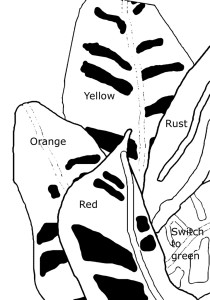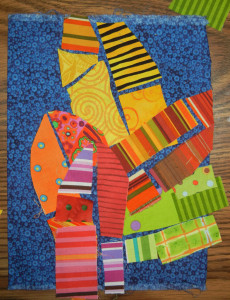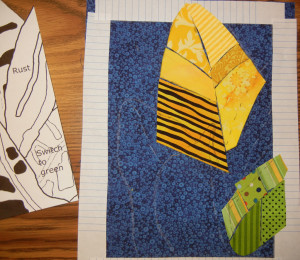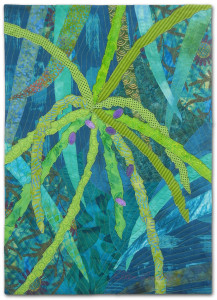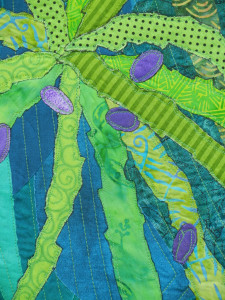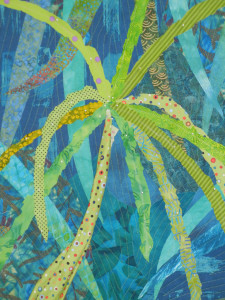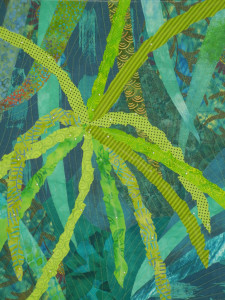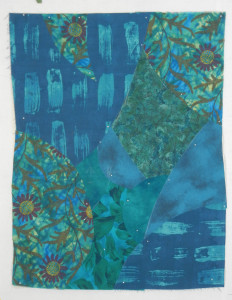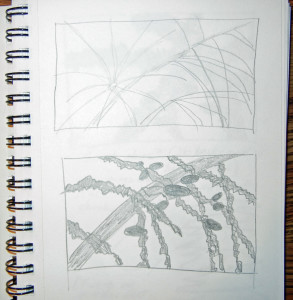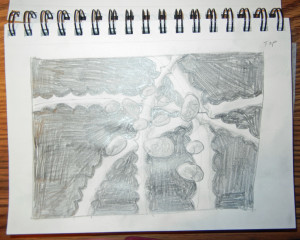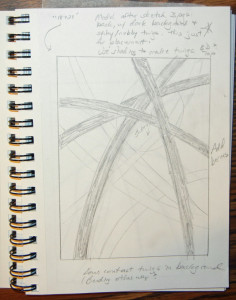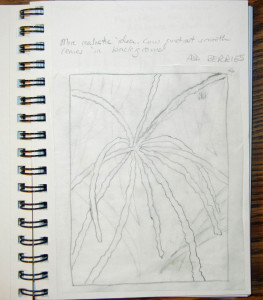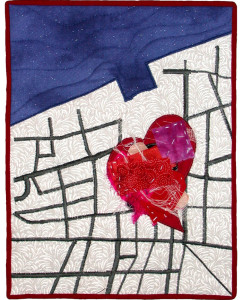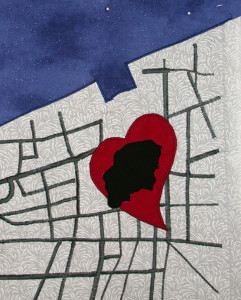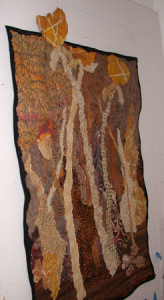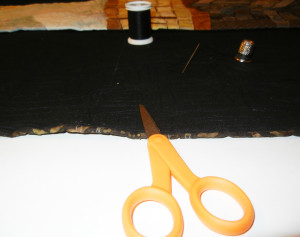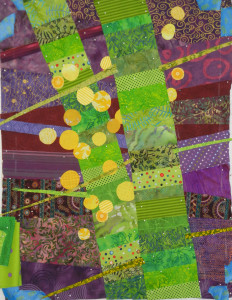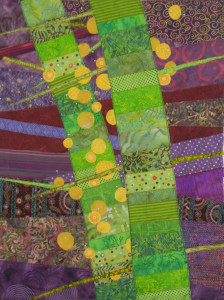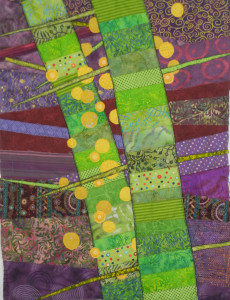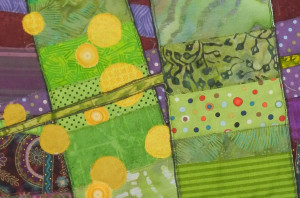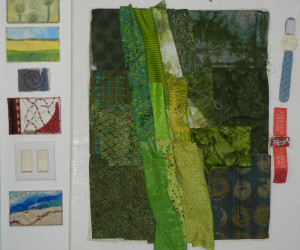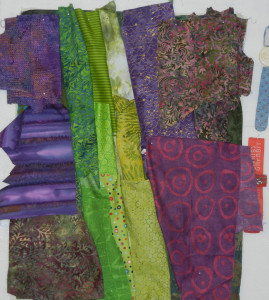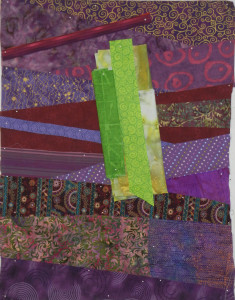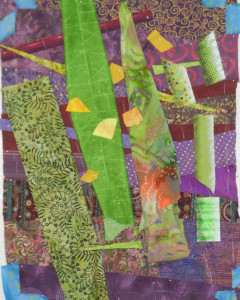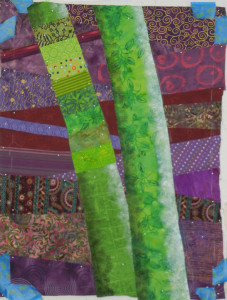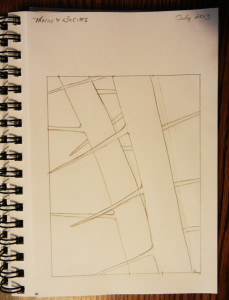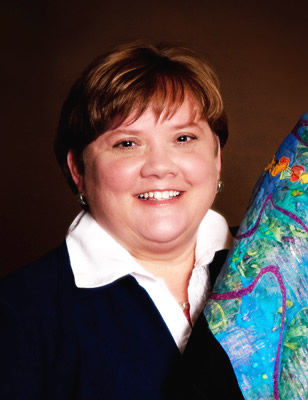For the SAQA “Trunk Show”
I belong to a wonderful organization called SAQA, Studio Art Quilt Associates. One of the goals of the group is to promote art quilts. With that in mind, the group orchestrates trunk shows of very small quilts. These travel, free of charge, to any group that asks. Isn’t that cool?
This year’s call for trunk show art asks for tiny quilts measuring 10″ high and 7″ wide. They must be completely finished, and should represent the artist’s usual style. That last part is something of a challenge, due to the scale!
Of course, I decided to depict one of my favorite subjects, crotons. I started by looking at a ton of my photos and then began to sketch with the computer. This is what I came up with.
Click any image for a larger view 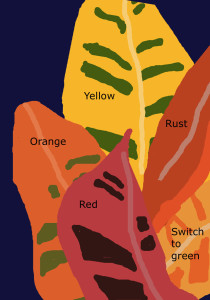
I converted it to black and white and printed it out. Due to the small size, I was able to use it as my pattern. Very easy!
Next, I auditioned fabrics. Working at this very small scale gave me the idea of using striped fabrics as the veining in the leaves. I pulled them out to see if I was on track.
Yes! I could definitely see these fabrics working. Still, I planned a little bit more, making sure I’d have the contrast I needed.
Gee, it has a lot of energy at this stage, doesn’t it? Definitely something to revisit.
But back to the quilt at hand. I started cutting fabrics and laying them in place.
My plan was to leave a gap between the pieces where the largest vein is and to allow the blue background to show through. I knew it would also show a little in some of the other pieces, and I figured that was a good thing.
I was loving how this was coming together, and the fun of playing with these stripes!
Have you ever tried working in a completely different scale? It sure can be challenging. But, rewarding, too. Especially when the piece goes this quickly.
Ellen Lindner
